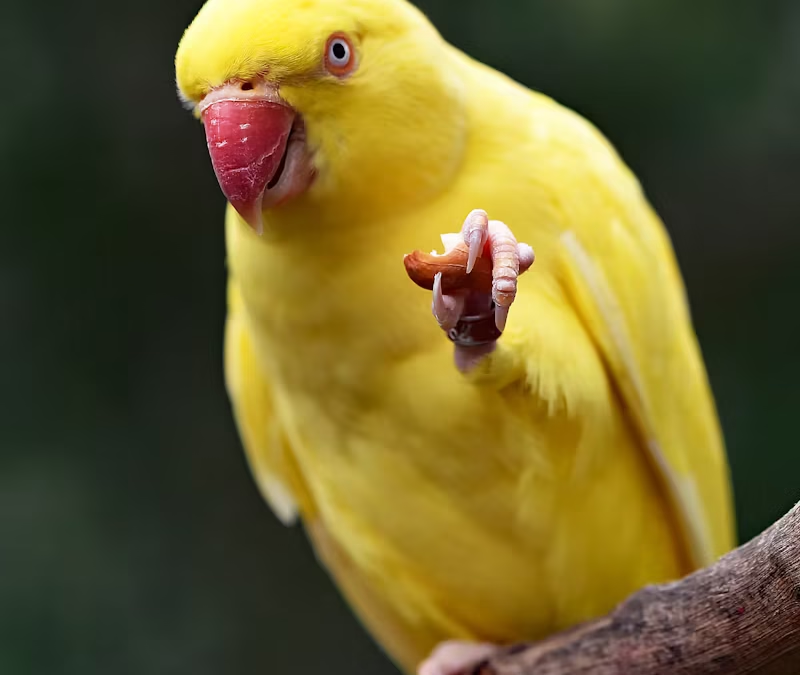Train Parrot Talk
How to Get Your Parrot to Talk: Step-by-Step Instructions for Parrot Owners
Parrots are known to be talkers, and therefore they’re likely one of the most entertaining and engaging pets you’ll ever own. From African Greys and Amazons to Macaws and Indian Ringnecks, there are many different parrot species which are born talkers. But yes, it does take patience, practice, and getting the right approach so that a parrot will talk.
In this definitive guide, we will walk you through the most important things you need to know about how to teach a parrot to talk, including the best method, the best environment, and how to avoid common mistakes. Whether you are starting out or want to increase your bird’s vocabulary, this article will give you all the tools you need to allow your parrot to talk verbally and audaciously.
Why Do Parrots Talk?
Parrots are highly social and intelligent animals. They communicate with their flock in voice calls in the wild. Domesticated parrots look at their human caregivers as members of their flock—or “flock”—and try to communicate with them the same way.
Parrots mimic human speech because it is a source of social bonding and stimulation for the brain. They do not simply parrot words; parrots, many of them, can use speech in context when properly trained.
What Parrots Make the Best Talkers?
All parrots are unique, but some parrots talk more than others. These are the best talkers:
• African Grey Parrot: Considered the best talker and one of the smartest.
• Amazon Parrot: Loud and expressive, and enjoys mimicking conversations.
• Indian Ringneck: Will have a clear, human-like voice.
• Budgies (Parakeets): Small but will pick up a great number of words.
• Quaker Parrots: Talkative and loving once bonded.
No matter the species, training success depends on repetition, bonding, and consistency.
Step 1: Build a Bond Before Training
As a condition to expecting your parrot to talk, it has to be made to feel secure, safe, and close to you. Parrots speak only when they trust you and enjoy your company.
Trust-building tips:
• Spend quality time near your parrot’s cage.
• Talk to your bird during the day in a calm, cheerful voice.
• Offers treats from your hand.
• Don’t suddenly move or make a loud noise.
After your bird has begun to feel secure, training is more effective.
Step 2: Begin with Simple, Clear Words
Begin speech training with simple, frequently used words. Birds are most likely to mimic words that are heard most frequently and are related to pleasant experiences.
Good starting words are:
• Hello
• Hi
• Bye-bye
• Good bird
• Your parrot’s name
• Step up
Repeat the word clearly, slowly, and repeatedly—especially at times when your parrot is focused, such as in the morning or prior to feeding.
Step 3: Use Positive Reinforcement
Likewise, teaching a dog to sit, parrots are also positive reinforcement-responsive. As soon as your parrot makes the attempt to mimic a word or sound, immediately reward it with a treat, head scratch, or praise.
Tips for reward system:
• Select a favorite treat (a bit of nut or fruit, for example).
• Reward immediately after the behavior.
• Train in brief sessions—5 to 10 minutes at a time.
Consistency is key. Your parrot will then associate the word with a happy experience. Step 4: Repeat and Be Patient
Practice and be patient are the keys to educating parrots to talk. It may take weeks or months before your bird says its first word, but with regular practice, it shall come.
• Practice a word or phrase daily.
• Use it in an exaggerated, energetic tone.
• Use it in context so the bird learns its meaning.
• Encourage learning by playing videos or audio recordings when you’re away.
Avoid overwhelming your parrot with too many words at once. Focus on one or two until they are mastered. Common Mistakes to Avoid
Teaching a parrot to talk is rewarding but requires patience. Here are some mistakes to steer clear of:
• Inconsistent training: Skipping sessions confuses the bird.
• Bad responses: Never shout or curse, even when the bird is bad.
• Training bad words: Birds learn by imitation—no swear words!
• Too much background noise: Your bird will not be able to distinguish words.
Be a firm, pleasant, and supportive teacher.
Advanced Techniques for Increasing the Vocabulary Size
Once your parrot has learned a few words, it will likely want to learn more. Encourage it by:
• Labeling objects you give them a name (e.g., “banana” or “toy”).
•
Connecting words to actions (“step up,” “come here”).
•
The repetition of the same actions at the same time each day, like greetings or bedtime.
•
_Viewing educational parrot videos for vocal stimulation.
The more you talk, the more your parrot will talk back.
Final Thoughts: Talking Parrots Make Lifelong Companions
Teaching your parrot to talk is a fun, interactive experience that strengthens your bond. It stimulates their inherent intelligence and satisfies their appetite for communication. With time, patience, and plenty of repetition, your parrot may astound you with a full-blown conversation.
Take things slowly, stay optimistic, and enjoy learning just how intelligent—and social—your parrot really is.

